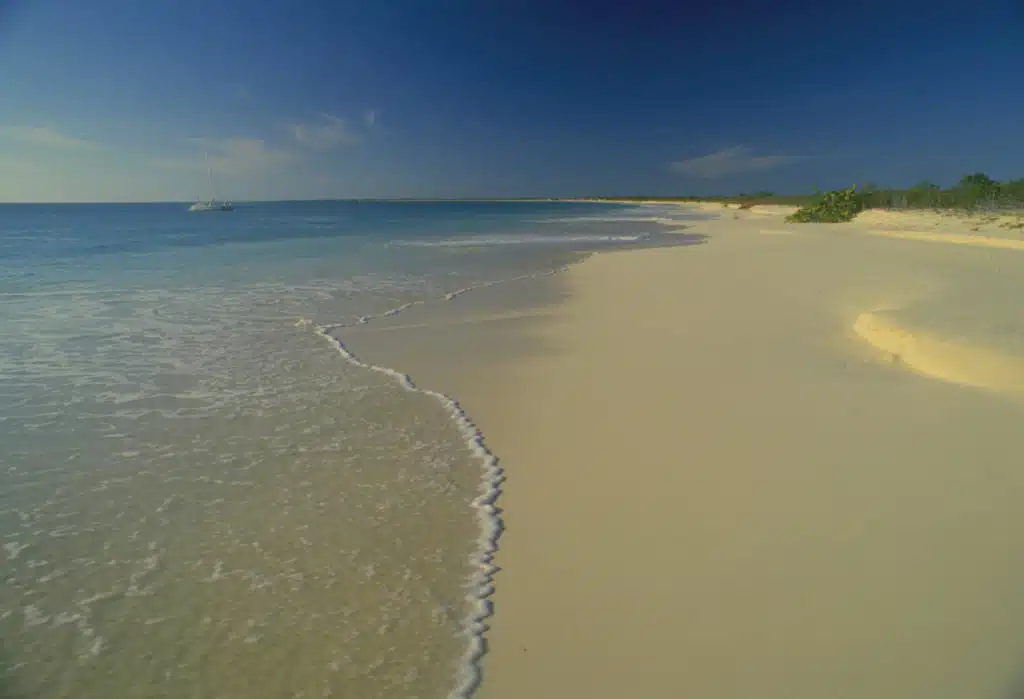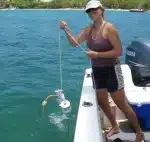A Pacific Ocean coral island, populated around 40 years ago, reveals how human settlement can quickly degrade water quality and affect the health of coral reefs, Sydney scientists say.
Jessica Carilli, of the Australian Nuclear Science and Technology Organisation, and Sheila Walsh, of the Nature Conservancy, used Kirimati Island to examine the shells made by an organism that thrives in high-nutrient conditions, which is considered detrimental to coral.
“We used a unique metric to estimate water quality before and after people arrive by comparing types of dead and live microscopic shells in reef sand made by organisms called foraminifera,” says Jessica, an ANSTO postdoctoral fellow.
Jessica and Shelia collected sand underwater at sites close to and far from human populations and fishing. They found that greater levels of fishing were associated with bigger differences in dead and live shell types.
“At more heavily fished sites, the living population was dominated by foraminifera that thrive in high-nutrient conditions,” Jessica says.
The relationship suggests that fishing can lead to higher nutrients in the water column, which is generally bad for corals, supporting other research that shows healthy fish populations are important for healthy coral reefs.
Kirimati Island was settled in the 1970s when a re-population program in the Republic of Kiribati moved people from the overcrowded capital, Tarawa, to under-populated outer islands.






 Fresh Science is on hold for 2022. We will be back in 2023.
Fresh Science is on hold for 2022. We will be back in 2023.